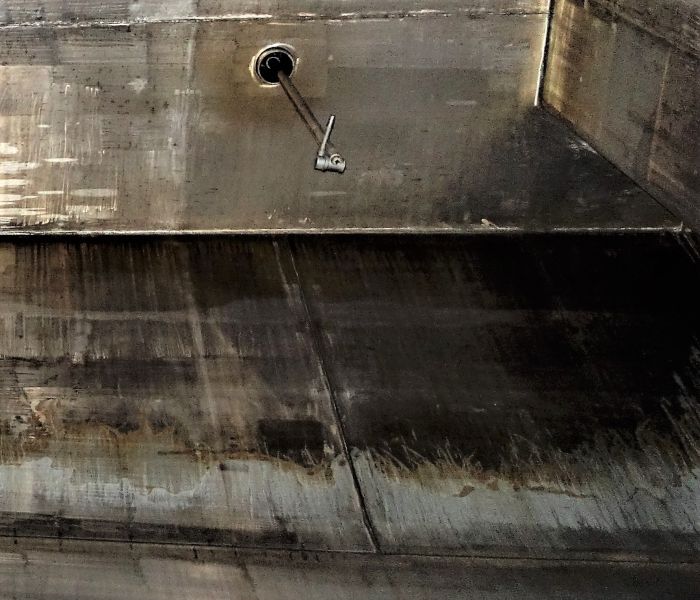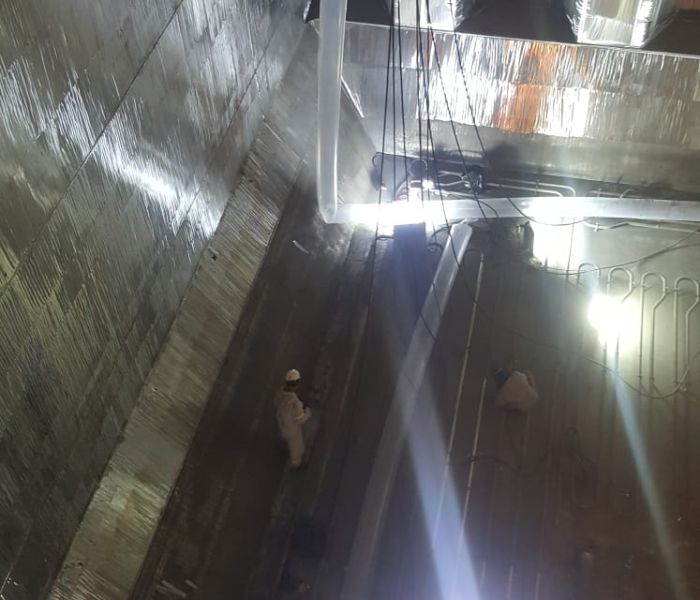Wet Process Phosphoric Acid
(Wet-PAC) Corrosion Damages
We herewith explain how chemical tanker operators can protect their interests in the face of damage to stainless-steel tanks from the carriage of wet process phosphoric acid.
Phosphoric acid, Wet-process acid. From a corrosion point of view, wet process phosphoric acid (WPA) is a rather complicated chemical. The reason is that it usually contains large amounts of impurities, some of which are activating and others will inhibit the corrosion process.
Wet Process Phosphoric Acid (read more about Wet PAC) is a key component in the worldwide fertiliser industry. It is a complex mixture of phosphoric acid, corrosive compounds, such as chloride and fluoride, and other impurities such as metal oxides.
During the last years but also recently, a number of chemical tanker operators faced significant damage to stainless-steel cargo tanks as a result of shipping WPA cargoes of North African origin, bound for discharge ports in India. Cargoes were shown to contain corrosive compounds above the agreed specification for carriage. Repairs and delay resulted in losses in the millions of dollars and legal proceedings.
One of the reasons of this serious issue is caused by thee too high concentration and impact of individual corrosive accelerators, such as fluoride and chloride, which can significantly impact stainless-steel tanks.
The Wet PAC cargo is loaded and blended in sub-batches to reach the required P205 strength. Throughout the process, tanker operators have noted a failure to monitor fluoride/chloride levels in the WPA. Moreover, sampling and testing during the process is only ever as good as the personnel, equipment and accreditation being used.
In case stainless steel cargo tanks have been affected by WPA cargoes, the most common problems are:
-
Black discoloration or black oxidation (also known as blackening) of the Stainless Steel surfaces mainly above liquid level caused by a chemical reaction (oxidation)
-
Black dust which is a corrosion product and seems to be coming of from the surface endlessly
-
Extreme High Surface Roughness (High Ra)
-
(Deep) Pitting Corrosion
ISTECH has the right solutions
ISTECH has the right solutions available for each and all of these problems. We are well known as the stainless steel surface repair and treatment troubleshooter in these specific issues for many years. Furthermore, we have also several chemical surface cleaning and treatment products available to reduce the risks and to solve several issues such as stainless steel passivity recovery, cleaning of Wet Phosphoric Acid green residues.

Black discoloration or Blackening of bulkhead upper plates above cargo level

Surface peeling due to heavy corrosion damage caused by Wet-PAC

Surface Repair by Grinding and Polishing almost finished, only tanktop left

Final step is Pickling and Passivation process acc. to ASTM-A380
STAINLESS STEEL SURFACE BUFFING - GRINDING - POLISHING - WELDING
CLEANING OPERATIONS - PICKLING AND PASSIVATION
